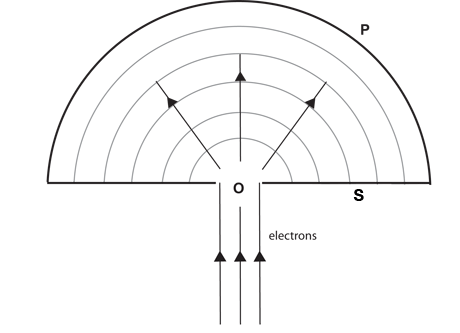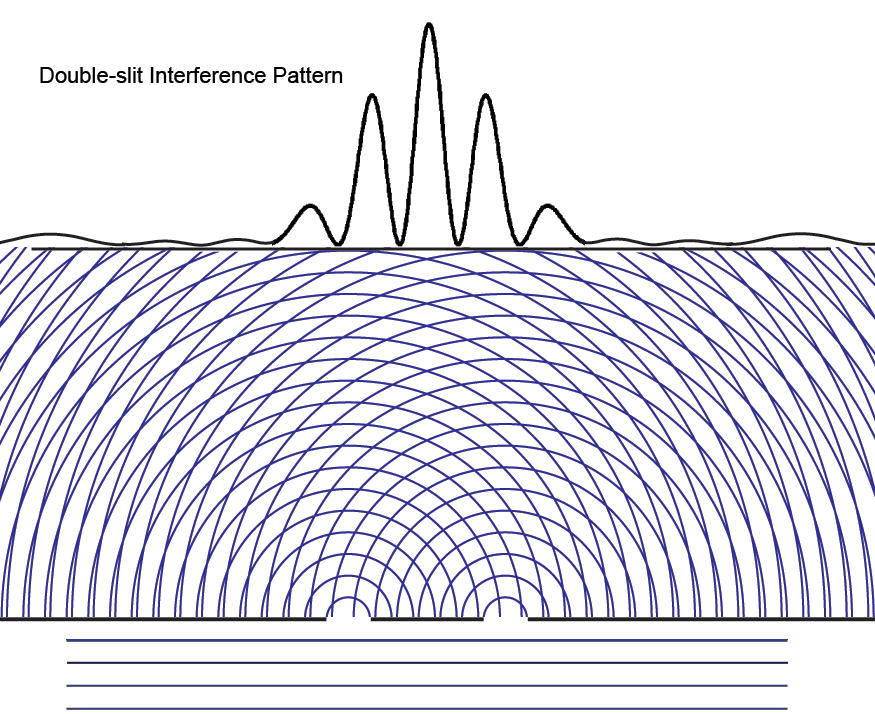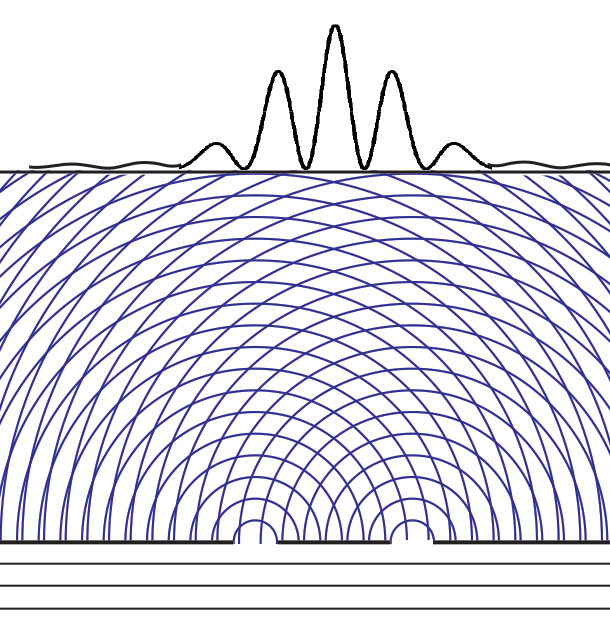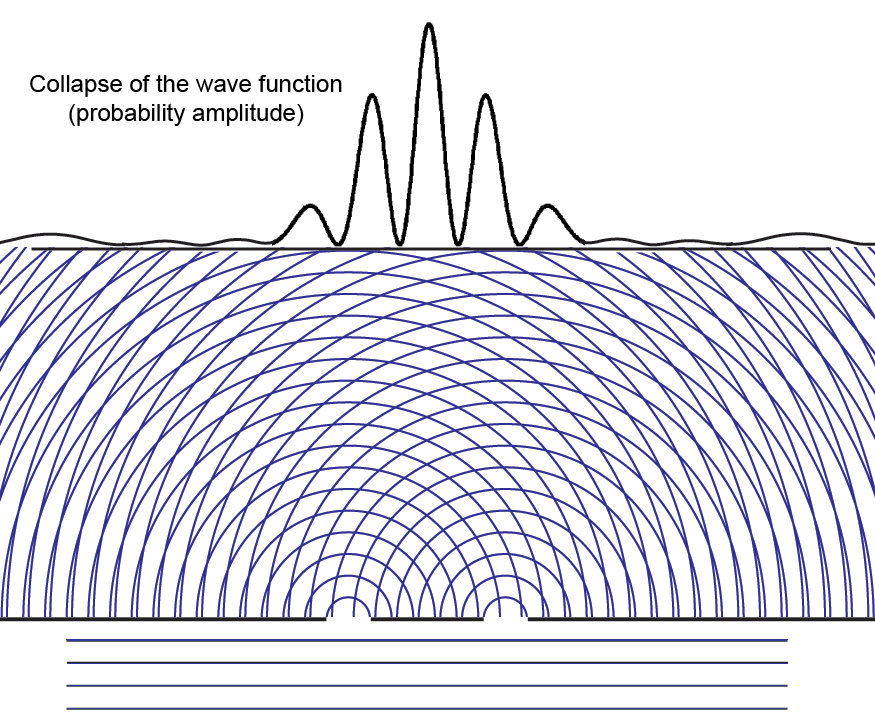|
Philosophers
Mortimer Adler Rogers Albritton Alexander of Aphrodisias Samuel Alexander William Alston Anaximander G.E.M.Anscombe Anselm Louise Antony Thomas Aquinas Aristotle David Armstrong Harald Atmanspacher Robert Audi Augustine J.L.Austin A.J.Ayer Alexander Bain Mark Balaguer Jeffrey Barrett William Barrett William Belsham Henri Bergson George Berkeley Isaiah Berlin Richard J. Bernstein Bernard Berofsky Robert Bishop Max Black Susanne Bobzien Emil du Bois-Reymond Hilary Bok Laurence BonJour George Boole Émile Boutroux Daniel Boyd F.H.Bradley C.D.Broad Michael Burke Lawrence Cahoone C.A.Campbell Joseph Keim Campbell Rudolf Carnap Carneades Nancy Cartwright Gregg Caruso Ernst Cassirer David Chalmers Roderick Chisholm Chrysippus Cicero Tom Clark Randolph Clarke Samuel Clarke Anthony Collins Antonella Corradini Diodorus Cronus Jonathan Dancy Donald Davidson Mario De Caro Democritus Daniel Dennett Jacques Derrida René Descartes Richard Double Fred Dretske John Dupré John Earman Laura Waddell Ekstrom Epictetus Epicurus Austin Farrer Herbert Feigl Arthur Fine John Martin Fischer Frederic Fitch Owen Flanagan Luciano Floridi Philippa Foot Alfred Fouilleé Harry Frankfurt Richard L. Franklin Bas van Fraassen Michael Frede Gottlob Frege Peter Geach Edmund Gettier Carl Ginet Alvin Goldman Gorgias Nicholas St. John Green H.Paul Grice Ian Hacking Ishtiyaque Haji Stuart Hampshire W.F.R.Hardie Sam Harris William Hasker R.M.Hare Georg W.F. Hegel Martin Heidegger Heraclitus R.E.Hobart Thomas Hobbes David Hodgson Shadsworth Hodgson Baron d'Holbach Ted Honderich Pamela Huby David Hume Ferenc Huoranszki Frank Jackson William James Lord Kames Robert Kane Immanuel Kant Tomis Kapitan Walter Kaufmann Jaegwon Kim William King Hilary Kornblith Christine Korsgaard Saul Kripke Thomas Kuhn Andrea Lavazza Christoph Lehner Keith Lehrer Gottfried Leibniz Jules Lequyer Leucippus Michael Levin Joseph Levine George Henry Lewes C.I.Lewis David Lewis Peter Lipton C. Lloyd Morgan John Locke Michael Lockwood Arthur O. Lovejoy E. Jonathan Lowe John R. Lucas Lucretius Alasdair MacIntyre Ruth Barcan Marcus Tim Maudlin James Martineau Nicholas Maxwell Storrs McCall Hugh McCann Colin McGinn Michael McKenna Brian McLaughlin John McTaggart Paul E. Meehl Uwe Meixner Alfred Mele Trenton Merricks John Stuart Mill Dickinson Miller G.E.Moore Thomas Nagel Otto Neurath Friedrich Nietzsche John Norton P.H.Nowell-Smith Robert Nozick William of Ockham Timothy O'Connor Parmenides David F. Pears Charles Sanders Peirce Derk Pereboom Steven Pinker Plato Karl Popper Porphyry Huw Price H.A.Prichard Protagoras Hilary Putnam Willard van Orman Quine Frank Ramsey Ayn Rand Michael Rea Thomas Reid Charles Renouvier Nicholas Rescher C.W.Rietdijk Richard Rorty Josiah Royce Bertrand Russell Paul Russell Gilbert Ryle Jean-Paul Sartre Kenneth Sayre T.M.Scanlon Moritz Schlick Arthur Schopenhauer John Searle Wilfrid Sellars Alan Sidelle Ted Sider Henry Sidgwick Walter Sinnott-Armstrong J.J.C.Smart Saul Smilansky Michael Smith Baruch Spinoza L. Susan Stebbing Isabelle Stengers George F. Stout Galen Strawson Peter Strawson Eleonore Stump Francisco Suárez Richard Taylor Kevin Timpe Mark Twain Peter Unger Peter van Inwagen Manuel Vargas John Venn Kadri Vihvelin Voltaire G.H. von Wright David Foster Wallace R. Jay Wallace W.G.Ward Ted Warfield Roy Weatherford C.F. von Weizsäcker William Whewell Alfred North Whitehead David Widerker David Wiggins Bernard Williams Timothy Williamson Ludwig Wittgenstein Susan Wolf Scientists David Albert Michael Arbib Walter Baade Bernard Baars Jeffrey Bada Leslie Ballentine Marcello Barbieri Gregory Bateson Horace Barlow John S. Bell Mara Beller Charles Bennett Ludwig von Bertalanffy Susan Blackmore Margaret Boden David Bohm Niels Bohr Ludwig Boltzmann Emile Borel Max Born Satyendra Nath Bose Walther Bothe Jean Bricmont Hans Briegel Leon Brillouin Stephen Brush Henry Thomas Buckle S. H. Burbury Melvin Calvin Donald Campbell Sadi Carnot Anthony Cashmore Eric Chaisson Gregory Chaitin Jean-Pierre Changeux Rudolf Clausius Arthur Holly Compton John Conway Jerry Coyne John Cramer Francis Crick E. P. Culverwell Antonio Damasio Olivier Darrigol Charles Darwin Richard Dawkins Terrence Deacon Lüder Deecke Richard Dedekind Louis de Broglie Stanislas Dehaene Max Delbrück Abraham de Moivre Bernard d'Espagnat Paul Dirac Hans Driesch John Eccles Arthur Stanley Eddington Gerald Edelman Paul Ehrenfest Manfred Eigen Albert Einstein George F. R. Ellis Hugh Everett, III Franz Exner Richard Feynman R. A. Fisher David Foster Joseph Fourier Philipp Frank Steven Frautschi Edward Fredkin Benjamin Gal-Or Howard Gardner Lila Gatlin Michael Gazzaniga Nicholas Georgescu-Roegen GianCarlo Ghirardi J. Willard Gibbs James J. Gibson Nicolas Gisin Paul Glimcher Thomas Gold A. O. Gomes Brian Goodwin Joshua Greene Dirk ter Haar Jacques Hadamard Mark Hadley Patrick Haggard J. B. S. Haldane Stuart Hameroff Augustin Hamon Sam Harris Ralph Hartley Hyman Hartman Jeff Hawkins John-Dylan Haynes Donald Hebb Martin Heisenberg Werner Heisenberg John Herschel Basil Hiley Art Hobson Jesper Hoffmeyer Don Howard John H. Jackson William Stanley Jevons Roman Jakobson E. T. Jaynes Pascual Jordan Eric Kandel Ruth E. Kastner Stuart Kauffman Martin J. Klein William R. Klemm Christof Koch Simon Kochen Hans Kornhuber Stephen Kosslyn Daniel Koshland Ladislav Kovàč Leopold Kronecker Rolf Landauer Alfred Landé Pierre-Simon Laplace Karl Lashley David Layzer Joseph LeDoux Gerald Lettvin Gilbert Lewis Benjamin Libet David Lindley Seth Lloyd Hendrik Lorentz Werner Loewenstein Josef Loschmidt Ernst Mach Donald MacKay Henry Margenau Owen Maroney David Marr Humberto Maturana James Clerk Maxwell Ernst Mayr John McCarthy Warren McCulloch N. David Mermin George Miller Stanley Miller Ulrich Mohrhoff Jacques Monod Vernon Mountcastle Emmy Noether Donald Norman Alexander Oparin Abraham Pais Howard Pattee Wolfgang Pauli Massimo Pauri Wilder Penfield Roger Penrose Steven Pinker Colin Pittendrigh Walter Pitts Max Planck Susan Pockett Henri Poincaré Daniel Pollen Ilya Prigogine Hans Primas Zenon Pylyshyn Henry Quastler Adolphe Quételet Pasco Rakic Nicolas Rashevsky Lord Rayleigh Frederick Reif Jürgen Renn Giacomo Rizzolati A.A. Roback Emil Roduner Juan Roederer Jerome Rothstein David Ruelle David Rumelhart Robert Sapolsky Tilman Sauer Ferdinand de Saussure Jürgen Schmidhuber Erwin Schrödinger Aaron Schurger Sebastian Seung Thomas Sebeok Franco Selleri Claude Shannon Charles Sherrington David Shiang Abner Shimony Herbert Simon Dean Keith Simonton Edmund Sinnott B. F. Skinner Lee Smolin Ray Solomonoff Roger Sperry John Stachel Henry Stapp Tom Stonier Antoine Suarez Leo Szilard Max Tegmark Teilhard de Chardin Libb Thims William Thomson (Kelvin) Richard Tolman Giulio Tononi Peter Tse Alan Turing Francisco Varela Vlatko Vedral Mikhail Volkenstein Heinz von Foerster Richard von Mises John von Neumann Jakob von Uexküll C. S. Unnikrishnan C. H. Waddington John B. Watson Daniel Wegner Steven Weinberg Paul A. Weiss Herman Weyl John Wheeler Wilhelm Wien Norbert Wiener Eugene Wigner E. O. Wilson Günther Witzany Stephen Wolfram H. Dieter Zeh Semir Zeki Ernst Zermelo Wojciech Zurek Konrad Zuse Fritz Zwicky Presentations Biosemiotics Free Will Mental Causation James Symposium |
Collapse of the Wave Function
Why is it that more than half of the modern "interpretations" of quantum mechanics deny the "collapse of the wave function?," also known as Paul Dirac's "projection postulate."
Why are so many serious physicists and philosophers of science so unhappy with this concept, which is a fundamental part of the "orthodox" theory proposed in the late 1920's by the "founders" of quantum mechanics - Werner Heisenberg, Niels Bohr, Max Born, Wolfgang Pauli, Pascual Jordan, and Dirac.
The main criticism is a logical argument, that there is a logical inconsistency between the linear Schrödinger equation, which evolves deterministically, and the sudden "collapse," which happens at a random, unpredictable time and produces a random outcome.
For many critics, the problem is the existence of ontological chance.
Albert Einstein, the foremost scientist of all time adamantly disliked the idea of "uncertainty" or "indeterminism," the thought that some things in the universe were not caused (or only statistically caused). Ironically, Einstein was the discoverer of chance in quantum mechanics, which he disliked. But he never denied that indeterminism was a part of a statistical quantum theory.
The idea of the wave function in quantum mechanics and its indeterministic collapse during a "measurement" is without a doubt among the three most controversial problems in quantum physics today, the others being the two-slit experiment and entanglement.
So it is very important to understand the importance of what Dirac called the projection postulate in quantum mechanics. The “collapse of the wave function” is also known as the “reduction of the wave packet.” This describes the change from a system that can be seen as having many possible quantum states (Dirac’s principle of superposition) to its randomly being found in only one of those possible states.
Although the collapse is historically thought to be caused by a measurement, and thus dependent on the role of the observer in preparing and running the experiment, collapses can occur whenever quantum systems interact (e.g., collisions between particles) or even spontaneously (e.g., in the decay of radioactive nuclei).
The claim that an observer is needed to collapse the wave function has injected an unacceptable anthropomorphic element into quantum theory, suggesting that nothing happens in the universe except when physicists are making measurements. An extreme example is Hugh Everett’s Many Worlds theory, which says that the universe splits into two nearly identical universes whenever a physical measurement is made.
What is the Wave Function?
As Einstein’s blackboard drawing at the Solvay Conference shows us, the wave function propagates like a light wave, but when the particle appears, it is found at a single point P.
 In 1905 the wave was the energy in a light wave radiating out in all directions, but then instantly gathering all its energy at one location to eject a photoelectron carrying all that energy.
Louis de Broglie in 1924 suggested there is a matter wave associated with any material particle. For Erwin Schrodinger, the wave was the distributed mass of the electron, or perhaps its "smeared out" charge?
Today the wave is an abstract complex wave function Ψ whose square gives us the probability of finding a particle. Many locations have some probability of being the position until the moment when the particle is found somewhere. At that moment, the probability of its being anywhere else goes instantly to zero.
This abrupt change of probability to unity at one location and zero everywhere else has been interpreted as a “collapse.” If the wave had been carrying energy in all directions, or matter/charge as de Broglie and Schrödinger thought, energy and matter would indeed have had to “collapse” to the point.
But nothing substantial is moving in the "collapse" of an abstract probability to one of many possibilities.
Note that should another particle enter through one of the slits, its wave function Ψ would be the same, since the boundary conditions used to calculate Ψ have not changed.
Perhaps the best illustration of the wave function is to show it passing though the famous slits in a two-slit experiment. It has been known for centuries that water waves passing through a small opening create circular waves radiating outward from that opening. If there are two openings, the waves from each opening interfere with those from the other, producing waves twice as high in the crests (or twice as deep in the troughs) and cancelling perfectly where a crest from one meets a trough from the other.
When we send light through tiny slits, we see a similar wave phenomenon. Despite the standard description, and although light energy is obviously moving, we will show that the wave is not moving and does not really "collapse." In the water example, there is actually very little, if any, water moving forward. A cork bobs up and down as waves pass it but water does not not pass the cork. The wave function is the solution of the Schrödinger equation, given the wavelength of the particle and the boundary conditions of the experiment.
We can regard it as a standing wave, with locations for null points (where the probability of finding a particle is zero) fixed at locations on the detection screen.
In 1905 the wave was the energy in a light wave radiating out in all directions, but then instantly gathering all its energy at one location to eject a photoelectron carrying all that energy.
Louis de Broglie in 1924 suggested there is a matter wave associated with any material particle. For Erwin Schrodinger, the wave was the distributed mass of the electron, or perhaps its "smeared out" charge?
Today the wave is an abstract complex wave function Ψ whose square gives us the probability of finding a particle. Many locations have some probability of being the position until the moment when the particle is found somewhere. At that moment, the probability of its being anywhere else goes instantly to zero.
This abrupt change of probability to unity at one location and zero everywhere else has been interpreted as a “collapse.” If the wave had been carrying energy in all directions, or matter/charge as de Broglie and Schrödinger thought, energy and matter would indeed have had to “collapse” to the point.
But nothing substantial is moving in the "collapse" of an abstract probability to one of many possibilities.
Note that should another particle enter through one of the slits, its wave function Ψ would be the same, since the boundary conditions used to calculate Ψ have not changed.
Perhaps the best illustration of the wave function is to show it passing though the famous slits in a two-slit experiment. It has been known for centuries that water waves passing through a small opening create circular waves radiating outward from that opening. If there are two openings, the waves from each opening interfere with those from the other, producing waves twice as high in the crests (or twice as deep in the troughs) and cancelling perfectly where a crest from one meets a trough from the other.
When we send light through tiny slits, we see a similar wave phenomenon. Despite the standard description, and although light energy is obviously moving, we will show that the wave is not moving and does not really "collapse." In the water example, there is actually very little, if any, water moving forward. A cork bobs up and down as waves pass it but water does not not pass the cork. The wave function is the solution of the Schrödinger equation, given the wavelength of the particle and the boundary conditions of the experiment.
We can regard it as a standing wave, with locations for null points (where the probability of finding a particle is zero) fixed at locations on the detection screen.
 Most of the light that reaches light detectors in the screen at the back lands right behind the barrier between the two slits. At some places, no light appears in the interference pattern.
If we look closely, the interference pattern is a kind of substructure inside an envelope that corresponds to the Fraunhofer diffraction pattern if the two slits were replaced by one large slit.
Most of the light that reaches light detectors in the screen at the back lands right behind the barrier between the two slits. At some places, no light appears in the interference pattern.
If we look closely, the interference pattern is a kind of substructure inside an envelope that corresponds to the Fraunhofer diffraction pattern if the two slits were replaced by one large slit.
 Today, thanks to the perseverance of Einstein, we know that light actually consists of large numbers of individual photons, quanta of light. Our experiment can turn down the amount of light so low that we know there is only a single photon, a single particle of light in the experiment at any time. What we see is the very slow accumulation of photons at the detectors, but with exactly the same interference pattern when a large number of photons has been detected. And this leads to what Richard Feynman called not just "a mystery,” but actually "the only mystery” in quantum mechanics.
How can a single particle of light interfere with itself, without going through both slits? We can see what would happen if it went through only one slit by closing one of them. We get a completely different interference pattern. Information philosophy now lets us visualize this highly non-intuitive phenomenon, one that Dirac says is impossible in classical physics. If you can follow, you are well on your way to comprehending, though perhaps not fully “understanding," quantum mechanics.
Today, thanks to the perseverance of Einstein, we know that light actually consists of large numbers of individual photons, quanta of light. Our experiment can turn down the amount of light so low that we know there is only a single photon, a single particle of light in the experiment at any time. What we see is the very slow accumulation of photons at the detectors, but with exactly the same interference pattern when a large number of photons has been detected. And this leads to what Richard Feynman called not just "a mystery,” but actually "the only mystery” in quantum mechanics.
How can a single particle of light interfere with itself, without going through both slits? We can see what would happen if it went through only one slit by closing one of them. We get a completely different interference pattern. Information philosophy now lets us visualize this highly non-intuitive phenomenon, one that Dirac says is impossible in classical physics. If you can follow, you are well on your way to comprehending, though perhaps not fully “understanding," quantum mechanics.
 From the time I first taught my students about the two-slit experiment in the late 1950's, I have always said that "something must be moving through both slits." But I am now questioning the idea that the wave function must be moving to explain the "collapse." Has the choice of words muddied the waters, so to speak? Let's start with the view that the wave function moves.
The wave function in quantum mechanics is a solution to Erwin Schrödinger’s famous wave equation that describes the evolution in time of his wave function ψ,
ih/2π δψ/δt = Hψ.
Following suggestions by Einstein about light waves and light particles in the years before 1920, Max Born in 1926 interpreted the wave function ψ(x) for a material particle at a position x as telling us that the complex square of the wave function, < ψ(x) | ψ(x) >, gives us the probability of finding a particle at that position. He was generalizing Einstein's radical idea, from nearly ten years earlier, that a light wave's amplitude (its energy) at a point is a measure of finding a light quantum there.
From the time I first taught my students about the two-slit experiment in the late 1950's, I have always said that "something must be moving through both slits." But I am now questioning the idea that the wave function must be moving to explain the "collapse." Has the choice of words muddied the waters, so to speak? Let's start with the view that the wave function moves.
The wave function in quantum mechanics is a solution to Erwin Schrödinger’s famous wave equation that describes the evolution in time of his wave function ψ,
ih/2π δψ/δt = Hψ.
Following suggestions by Einstein about light waves and light particles in the years before 1920, Max Born in 1926 interpreted the wave function ψ(x) for a material particle at a position x as telling us that the complex square of the wave function, < ψ(x) | ψ(x) >, gives us the probability of finding a particle at that position. He was generalizing Einstein's radical idea, from nearly ten years earlier, that a light wave's amplitude (its energy) at a point is a measure of finding a light quantum there.
Compare David Bohm's "pilot wave" that enters both slits, where the particle being carried along by the wave enters only one. The wave interferes with itself, creating the interference
So the quantum wave function going through the slits (and this probability amplitude wave ψ(x) does go through both slits) is an abstract number, neither material nor energy, just a probability. It is information about where particles of light (or particles of matter if we shoot electrons at the slits) will be found when we record a large number of them.
If we imagine a single particle being sent from a great distance away toward the two slits, the wave function that describes its “time evolution” or motion through space looks like a plane wave - the straight lines of the wave crests approaching the slits from below in the figure to the left. We have no information about the exact position of the particle. It could be anywhere. Einstein said that the Copenhagen interpretation of quantum mechanics is “incomplete” because the particle has no definite position before a measurement. He was right. When the particle lands on one of the detectors at the screen in back, we can represent it by the dot in the figure below.
Animation of a wave function collapsing - click to restart

If | ψ |2 were simply regarded as the probability that at a certain point a given particle is found at a given time, it could happen that the same elementary process produces an action in two or several places on the screen. But the interpretation, according to which | ψ |2 expresses the probability that this particle is found at a given point, assumes an entirely peculiar mechanism of action at a distance, which prevents the wave continuously distributed in space from producing an action in two places on the screen.”Einstein came to call this spukhafte Fernwerkung, “spooky action at a distance.” It is known today as nonlocality. Niels Bohr recalled Einstein’s description. He drew Einstein's figure on a blackboard, but he did not understand what Einstein was saying. Einstein referred at one of the sessions to the simple example, illustrated by Fig. 1, of a particle (electron or photon) penetrating through a hole or a narrow slit in a diaphragm placed at some distance before a photographic plate.Bohr's point A is the dot in our animation where the particle is found. His point B is Einstein's concern about another point where there is/was a non-zero probability of finding the particle.
How Information Physics Explains the Two-Slit Experiment
Although we cannot say anything about the particle’s whereabouts, we can say clearly that what goes through the two slits and interferes with itself is information. The wave function tells us the abstract probability of finding the particle somewhere.
In our latest information interpretation of quantum mechanics, we ask where the information about the probabilities of finding a particle are really coming from?
|